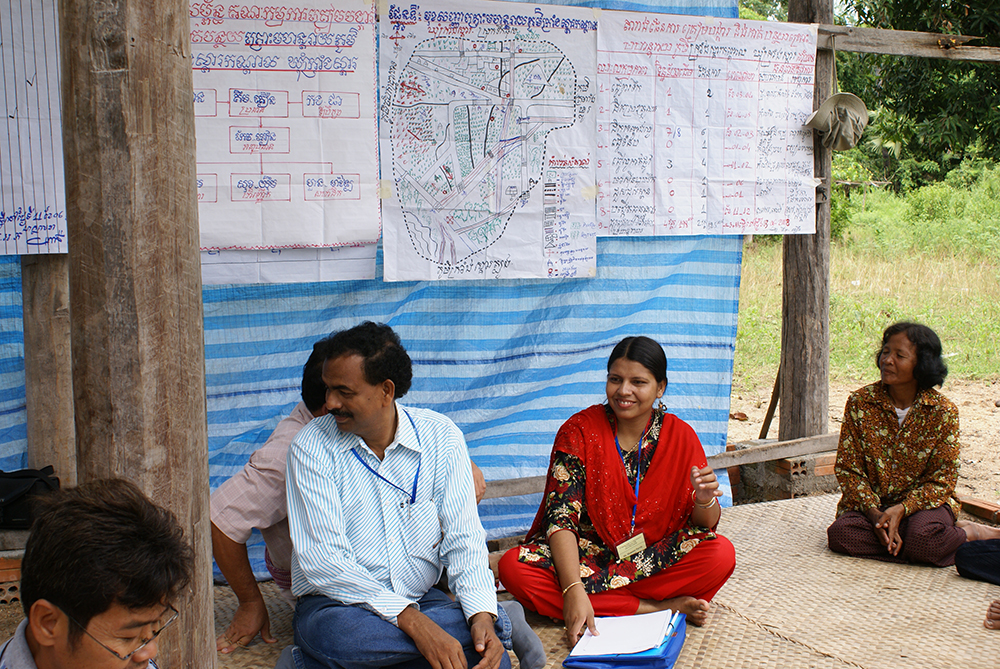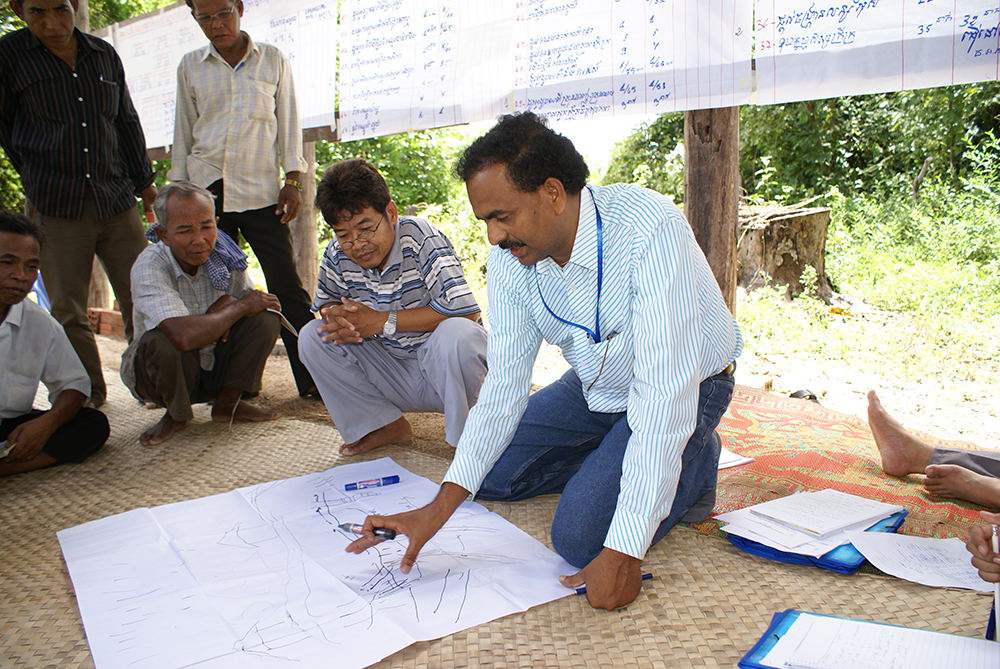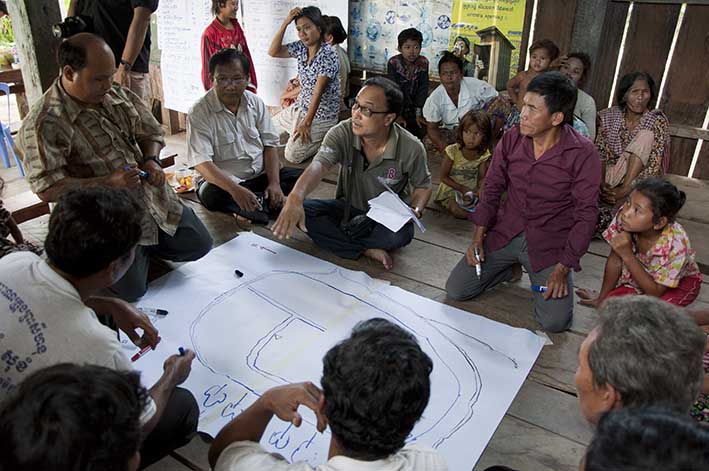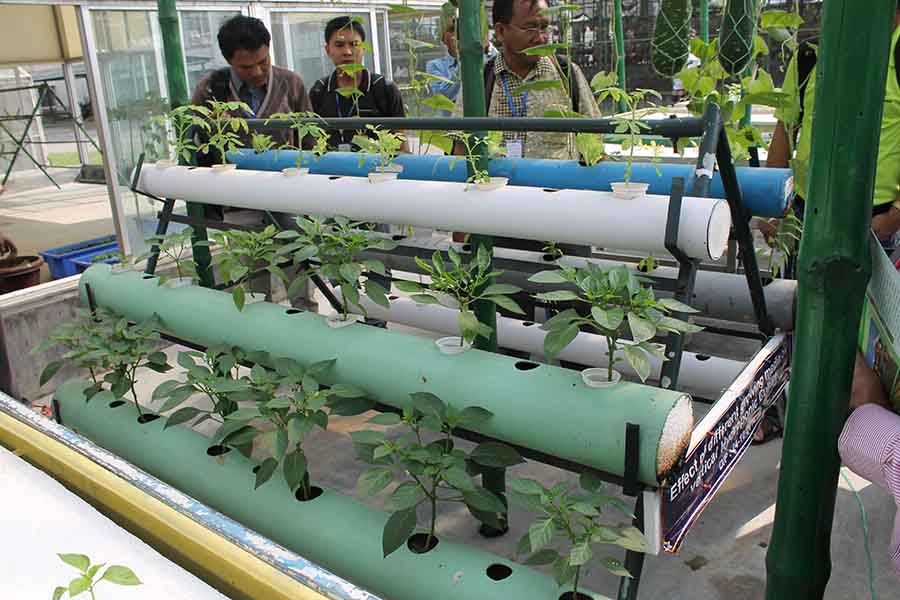Nepal Floods cause widespread environmental damage
- » Latest News »
- Nepal Floods cause widespread environmental damage
Kathmandu, 20 September 2017 – The devastating floods triggered by incessant torrential rains since 10 August wreaked havoc in the southern plains of Nepal on 13 August. The floods so far have killed 143 people, injured 43 and 30 people went missing.
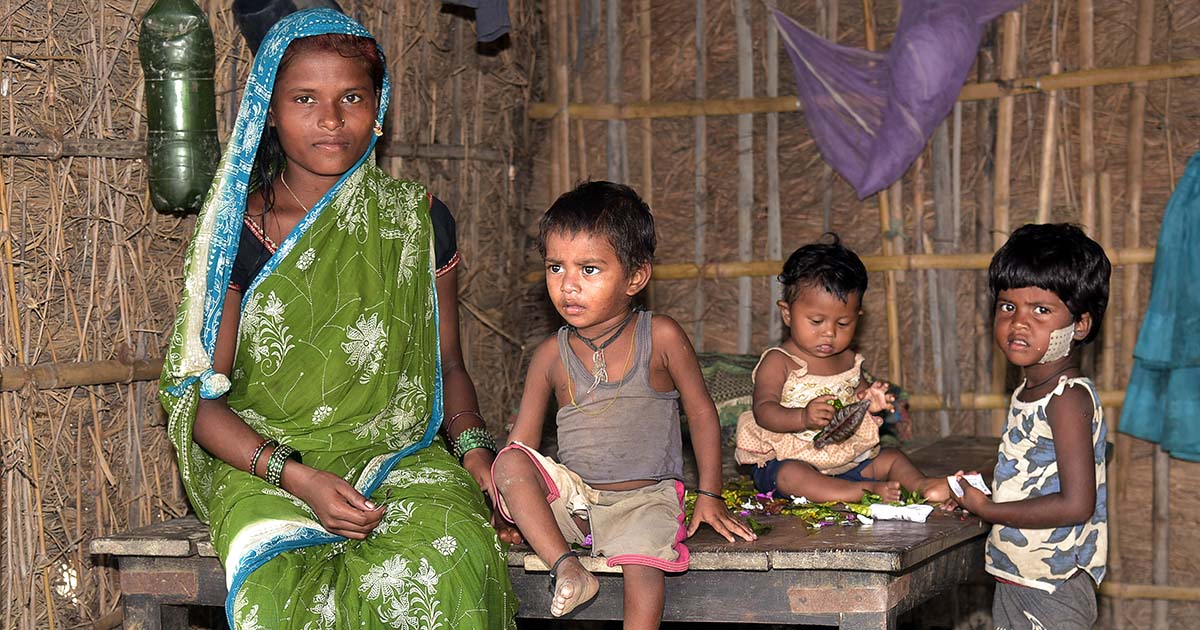
A family at Merry gaun, Raneri
The flooding in the 20 districts of the Tarai belt, according to the Ministry of Home Affairs, damaged more than 80% of its agricultural land and inundated approximately 35,000 houses and affected an 11.5 million people. Likewise, 79,812 houses were completely damaged and 144,444 were partially damaged by the flood, landslides, and inundation.
Essential services, such as road transportation, communication and electricity supply had been disrupted and cut-off in many parts of districts. In many districts even air transport were disrupted due to waterlogging in the runways and airport buildings. These created hurdle in assessing the impact, rescuing people and distributing relief materials.
The floods have both immediate and long-term negative impact on the environment of not only the affected 20 districts, but also to the adjoin ones in particular and on the entire country at large. A large number of cattle, domestic animals including dogs and cats, and poultry have been feared killed in the floods whose actual data has yet to be confirmed.
Since people prioritized their safety and those who lost family members mourned the death and were worried about the missing ones, it was natural for them to think about the proper management of the carcasses. There have been cases of people falling ill because of contaminated water, the stench wafting from the carcasses, open defecation and lack of proper food and sleep can be attributed to the cause of ailment.
People from the affected areas still fear an outbreak of an epidemic. Sandhoj Sundas, 85, a resident of Rangapur Urao settlement in Jhapa Rural Municipality in eastern part of Nepal, says, “Because of the dead animals and lack of toilet, we are forced to live here where stench wafts from every side uninterruptedly. This will make us sick.”
According to data released from Ministry of Agricultural Development, 8.11 billion worth of loss to agriculture sectors as standing crops, food grains and fisheries are damaged. Similarly Parliament's Agriculture and Water Resources Committee revealed the data on damage of irrigation amounts to Rs. 2.42 billion as 135 projects including 15 major irrigation system have been damaged.
The massive an unexpected floods have not only destroyed the standing crops and swept away food grains and seeds, but also eliminated greenery in the affected areas. Farm land, pastures, open space and the river banks have been thickly covered by sediment, resulting into sandbanks.
Need for debunking the myth
The Department of Weather Forecast at the Hydrology and Meteorology Division of the Government of Nepal had been sending SMS to the people particularly warning the residents in the eastern plain of Nepal of possible flood. One of the messages sent by the Department on 8 August at 8:34 pm reads,
“The water level on Kankai River at Mainachuli has crossed the danger level at 8:10 this evening and the water level is increasing. Therefore, we request the people living downstream to move to safer places.”
The SMS gives two clear messages in the context of the devastating floods. First, the early warning system of the government was quite functional and timely. Second, the community level emergency preparedness and response work particularly making the vulnerable people aware of the early warning system did not work as expected.
One of the causes of such unexpected disasters is believed to be climate change impact as well. Since climate has been changing over the years, it has begun to show its impacts now. Some decades earlier, the impact of climate change was neither as pronounced as today nor the people were as aware of its impacts as today.
Ganga Bahadur Bhujel, 58, a resident of Jhapa Rural Municipality ward no. 2 Baluwatar, acknowledges, “Yes, we received SMS from early morning Friday (11 August 2017) of the impending flood on the Kankai River. But nobody cared about it as everyone considered this place safe because this place had never been flooded in the past.”
It was not only the case of this particular place rather people living the downstream especially in a considerably safer place (on the assumption of the history of flood) did not move away on time, taking it for granted that the place which had never been flooded could not be at risk.
The learning from the crisis has come with a heavy price. It has been evident that the humanitarian and development agencies that work on disaster risk reduction (DRR), emergency preparedness and response should render the communities understand the importance of DRR, emergency preparedness and response warning system, focusing on the importance of early warning system.
Unprecedented Floods
Since the floods in 20 districts of the southern plains occurred simultaneously, it took the humanitarian agencies, the government and the community people by surprise. There had been sporadic cases of floods in the Tarai belt in the past, but not like the present one.
Because of its scale and occurrence, this flood has taught us many lessons. No one had imagined that all the means of transport (including air transport in some cases), and communication would come to a halt for two weeks. It has taught us that we need to have alternatives to transport and communications.
It was quite unthought-of disaster which killed a large number of animals and poultry, causing not only a huge damage to the livelihood of the poor, but also to the environment. Likewise, it was unbelievable that such a vast tract of land stretching from the east to the west could turn into sandbanks in a couple of days.
The need on the ground
The immediate needs of the flood-hit people are basic food, clothes, shelter and water, sanitation and hygiene (WASH). WASH has become the priority to meet the basic needs of the communities and to prevent possible outbreak of epidemics.
Restoration of the means of livelihood is another imperative. Since the farm land and pastures have been turned into sandbanks, it will take at least another six months for them to be able to grow crops. As they have lost almost all of their domestic animals and sources of fodder, there is an urgent need for livelihood support.
It has been realized that the government should reconsider the present way of allowing people to settle on vulnerable areas like low land, areas closer to rivers and rivulets, places where there is no basic facilities like drinking water, health post, means of transport, electricity, telecommunication and safer places required during such emergencies.
On top of that in order to protect the lives and livelihood of people, the open space which is important to preserve the environment should be managed properly so that it can be used during emergencies as safe place and contribute to promoting environment conducive to people, flora and fauna.
By: Ram Sharan Sedhai
September 28, 2017




